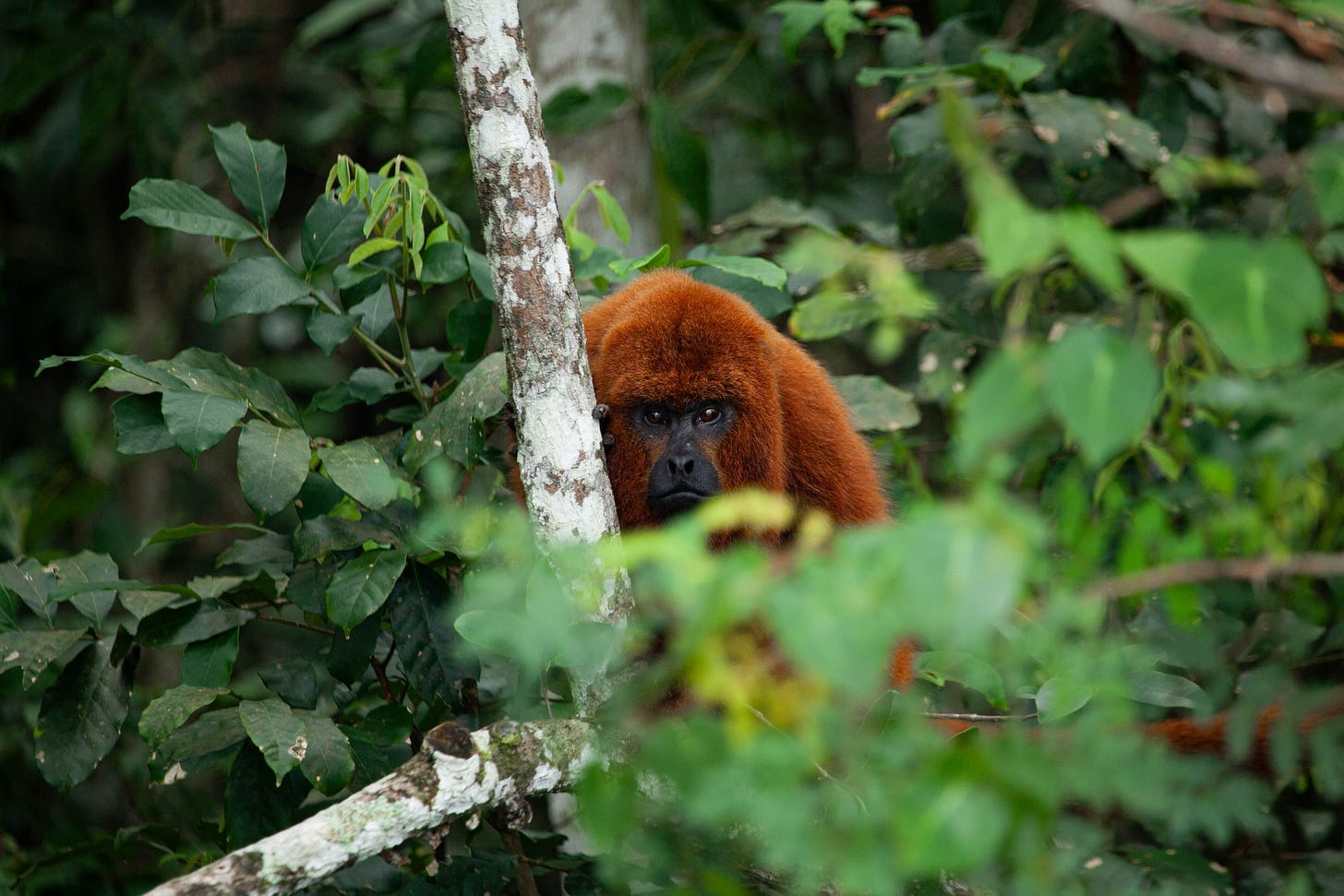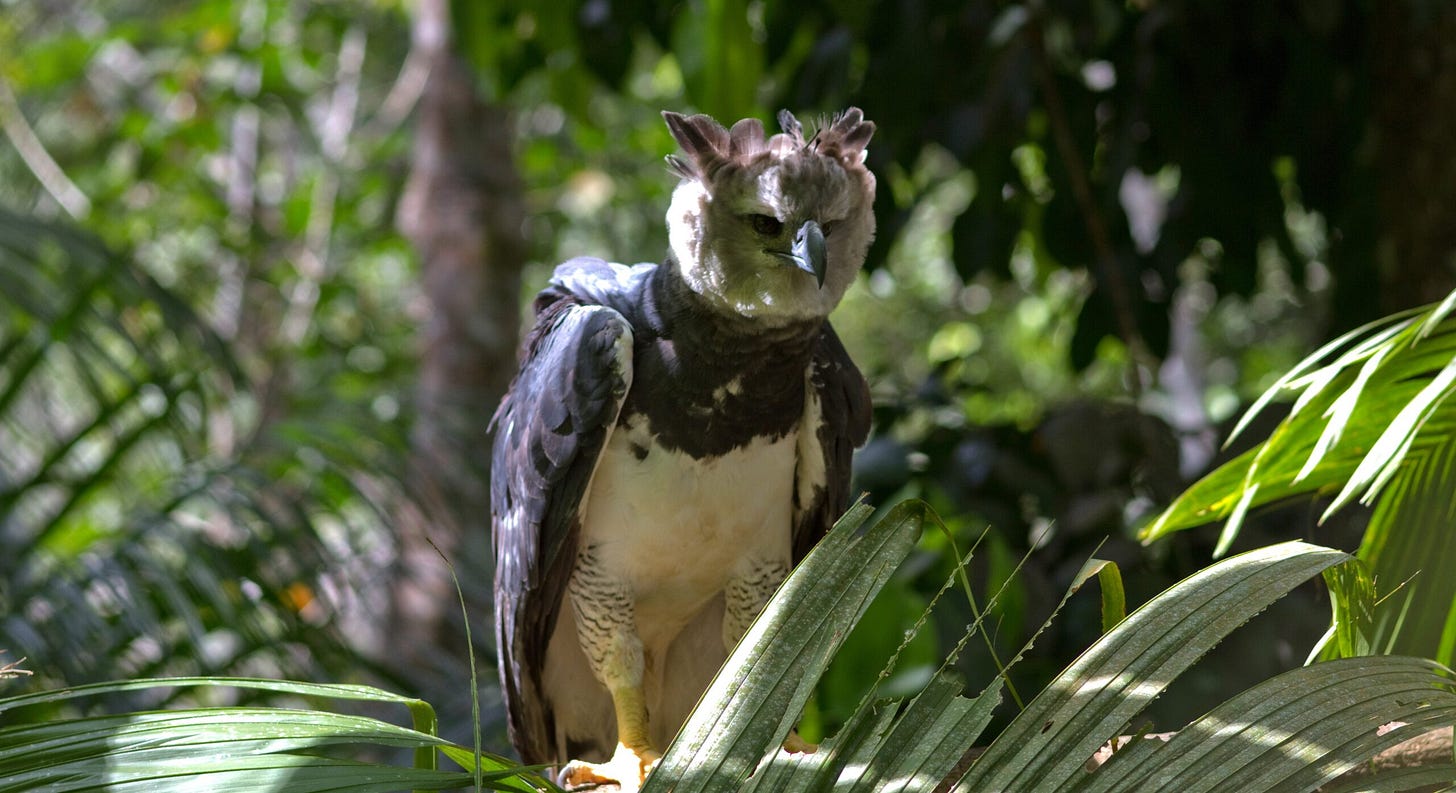Thank you to everyone who filled out the survey about my Substack newsletter. I'll leave it open through the end of the week to give more people a chance to provide their feedback.
Based on the results so far, it seems people would like to hear less from me, so unless the sentiment shifts significantly, next week I'll cut back to one post a week.
Here's the survey if you'd like to weigh in: Substack survey.
Here are a few recent "good news" stories from Mongabay News:
1) Red howler monkeys brought back to Santa Catarina 250 years after their extinction
In the Atlantic forests of Santa Catarina Island, the calls of red howler monkeys echo once again after more than 250 years of silence. Their reappearance is not an accident of nature but the result of a carefully coordinated rewilding effort led by the Instituto Fauna Brasil (IFB), a small but determined NGO. The return of these leaf-eating primates—extinct on the island since 1763—marks a critical milestone in ecological restoration, but it’s just the beginning, reports Letícia Klein for Mongabay Brasil.
The howler monkey project offers lessons that go beyond biology:
⏳ Reintroduction takes time. Five years of rehabilitation and bureaucratic navigation preceded the release of just 16 individuals.
🍌 Adaptation matters. Before release, monkeys were trained to recognize native plants and weaned off market produce to ensure survival.
📱 Citizen science amplifies impact. Locals help monitor the monkeys via social media, WhatsApp, and school outreach, extending the capacity of a five-person team.
Building on this momentum, IFB has now set its sights on reintroducing small wildcats, like the margay and southern wildcat, to restore ecological balance. Their absence has enabled invasive species like marmosets to wreak havoc on native bird populations.
Partnerships underpin everything—from drone support and logistics provided by local agencies to funding from PANTHERA’s Small Cat Action Fund. Still, the ultimate success of these efforts depends on shifting public perceptions.
Conservation, says IFB’s founder Vanessa Kanaan, isn’t passive preservation—it’s intervention.
In an era of accelerating biodiversity loss, the project offers a hopeful model: one where science, community, and a little ambition can reverse extinction—one species at a time.
2) How a sniffer dog, a team of physicists, and two biologists are saving a vanishing tortoise
The Argentine tortoise (Chelonoidis chilensis), once a common sight in the puddles of rural Patagonia, is now at risk of vanishing altogether.
Faced with alarming population declines, two biologists—María Eugenia Echave and Érika Kubisch—launched a bold conservation effort in 2016 near the coastal town of San Antonio Oeste. Nearly a decade later, their grassroots initiative has evolved into a data-rich, multi-disciplinary program. It combines satellite tracking, accelerometer tech, and even sniffer dogs to protect nearly 400 tagged tortoises—some of the southernmost populations of the species.
The program’s achievements are tangible, reports Oscar Bermeo Ocaña. From nest protection and aqueduct rescues to new behavioral insights—like the tortoises’ surprising 400-meter daily range—the effort has become a model for low-cost, locally rooted conservation. But progress is under threat. A major gas and oil pipeline slated to cross key habitats could unravel years of work, while open-air aqueducts continue to trap and kill dozens of tortoises each summer. Dialogue with provincial officials has been inconsistent, leaving researchers and volunteers to shoulder most of the responsibility.
Still, there are signs of hope. Local ranchers—once unaware of their role in habitat loss—are now allies, flagging sightings and inviting scientists to rural meetings. Detection dogs like Darwin, a basset hound turned turtle tracker, have dramatically improved field efficiency. And a team of physicists from the Centro Atomico Bariloche has developed custom devices to decode tortoise activity, turning vibrations into actionable insights—especially around nesting, a critical but elusive behavior.
Several lessons emerge from the Patagonian Land Turtle Conservation Program:
🧠 Local knowledge is vital: Farmers became allies once they were included, not blamed.
📱 Technology can close gaps: Simple sensors yielded breakthroughs where direct observation failed.
🤝 Citizen involvement scales impact: Volunteers rescued over 150 turtles from aqueducts alone.
🐕 Dogs do more than detect: They bridge science and the public, offering memorable success stories.
⚠️ Policy inertia is a bigger threat than poachers: Without institutional support, even the best conservation plans stall.
The tortoises may move slowly, but their defenders are picking up speed. Whether the government does the same may determine the species’ fate.
3) Harpy eagle confirmed in Mexico for first time in over a decade
After more than a decade of absence, the harpy eagle has returned to southern Mexico, a rare and hopeful sight in the fight to save this iconic species, reports Astrid Arellano.
Sightings of the young bird in Chiapas' Lacandon Jungle in 2023 were verified by Mexican conservationists and publicly announced in April 2025 at the Chiapas Bird Festival.
The sighting was particularly significant as it revealed not one but three harpy eagles: the juvenile and its parents, pointing to a potential breeding territory in the region.
Harpy eagles, known for their impressive size and powerful talons, are vulnerable to local extinction, with their remaining population scattered across fragmented habitats, mostly in the Amazon rainforest.
The Lacandon Jungle, where the eagle was spotted, faces severe environmental threats, including the loss of over two-thirds of its native tree cover.
Despite these challenges, local conservationists remain optimistic, hoping that the eagle's return will spur renewed efforts to protect ecosystems in the region.
The harpy sightings came a decade after scarlet macaws were successfully reintroduced to Mexico.







Highlighting these successes is so important in conservation education. As a teacher, opening a talk with stories about what works, then introsuxing challenges, shifts the entire atmosphere of the classroom. So thanks for the new stories
We need these reminders more than we ever have. We can create positive change despite the backdrop of gloom and doom. These are powerful examples that uplifted my heart today, Rhett. Thank you!